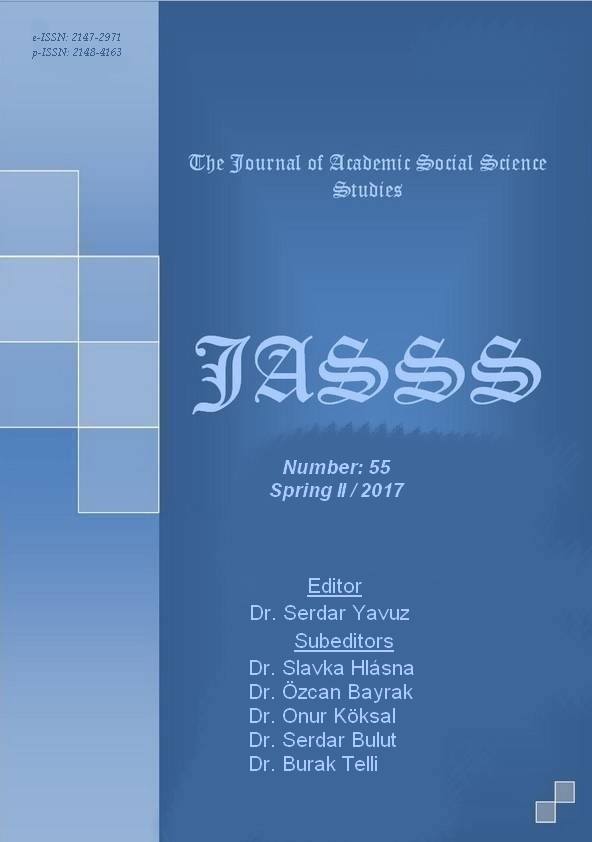KARŞILIKLI AKTARIMLI ANLAMAYA DAYALI YEDİ SÜZGEÇ METODU (EUROCOMGERM) İLE İKİNCİ YABANCI DİL OLARAK ALMANCA
Author :
Abstract
Bu çalışmanın amacı, Batı Cermen dil ailesinden İngilizceyi L2 olarak öğrenenlerin L3 olarak Almanca öğrenirken yedi süzgeçten oluşan EuroComGerm metodundan yararlanarak olumlu transfer oranını nasıl arttırabileceğini ortaya koymaktır. Hem İngilizceyi köprü dil olarak kullanarak, hem de daha önce edinilen yabancı dil öğrenme deneyimini ve becerilerini karşılaştırmalar yoluyla geliştirerek dil öğrenme sürecini hem keyifli hale getirmek hem de kısaltmaktır. İngilizce ve Almanca arasındaki benzerlik ve farklılıkların sistematize edilmeye çalışıldığı EuroComGerm metodundaki işlemler dizisi yedi süzgeçte toplanmıştır. Çalışmada her üç dil karşılaştırmalı yöntemle ele alınmış ve yedi süzgeç stratejilerine üç dilli farklı örnekler verilerek somutlaştırılmaya çalışılmıştır. Erek dil Almancayı öğrenmeye sıfırdan başlanılmaması öğrenenlerin hem motivasyonunu hem de hazırbulunuşluk düzeyini arttırıcı özellik göstermektedir. Süzgeçlerin etkili kullanılabilmesi için köprü dil İngilizceden etkin olarak yararlanmayı gerekli kılmaktadır. Bu nedenle yedi süzgeç stratejisi bağlamında olumlu transferlerin sayısını arttırmak amacıyla her üç dil (Almanca-İngilizce-Türkçe) karşılaştırmalı yöntemle örnek yapı ve cümleler üzerinden incelenmiştir. Karşılaştırmalı inceleme daha önce edinilen yabancı dil öğrenme becerileri, uluslararası sözcük dağarcığı, önekler, sonekler ve cümle dizilişleri gibi ortak kökenden gelen özelliklerden yararlanabilmenin kapılarını açmaktadır. Kendi kendine dil öğrenmeye ve öğretmeye yeni bir bakış açısı getirdiğini düşündüğümüz yedi süzgeçli EuroComGerm metodu yeni gelişmelere de açıktır.
Keywords
Abstract
The aim of this study is to show how positive transfer through using English (L2) in accordance with EuroComGerm methodology (consisting of seven sieves) attributes to German (L3) language learning considering that both languages belong to Western Germen language family. Using English as a Bridge (helping) language will not only enable students to make a comparison with their previously attained learning experiences but also make the language learning process shorter and more enjoyable. The processing sequence in EuroComGerm used to systematize the similarities and differences between English and German consists of seven sieves. The processing sequence in EuroComGerm used to systematize the similarities and differences between English and German consists of seven sieves. In the study all three languages have been considered through the seven sieves strategies and concrete examples in all three languages have been given to make the case more definite. It is observed that this comparative approach influenced both the motivation and readiness of students whose target is learning German. To make effective use of the sieves necessitates the effective usage of English the bridge (transfer) language. That is why to increase the number of positive transfers a careful analysis has been carried out through providing sample structures and statements in all three languages in question(German-English-Turkish) using the comparative method. Comparative analysis enables learners to make use of their previous learning experiences and to benefit from the shared features of languages coming from the same language family; such as prefixes, suffixes, syntax and international vocabulary. The seven sieves EuroComGerm methodology which is believed to provide a new perspective for self-learning and self-teaching is open to developments.
